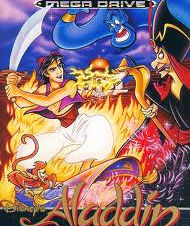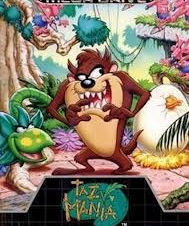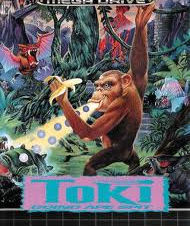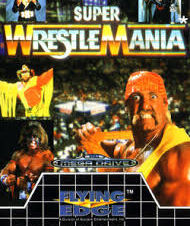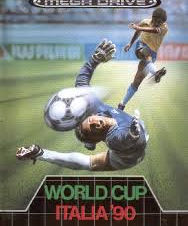


Sega Mega Drive
The Sega Genesis, known as the Mega Drive outside North America, is a 16-bit fourth-generation home video game console developed and sold by Sega. The Genesis was Sega's third console and the successor to the Master System. Sega released it in 1988 in Japan as the Mega Drive, and in 1989 in North America as the Genesis. In 1990, it was distributed as the Mega Drive by Virgin Mastertronic in Europe, Ozisoft in Australasia, and Tec Toy in Brazil. In South Korea, it was distributed by Samsung as the Super Gam*Boy and later the Super Aladdin Boy.
Designed by an R&D team supervised by Hideki Sato and Masami Ishikawa, the Genesis was adapted from Sega's System 16 arcade board, centered on a Motorola 68000 processor as the CPU, a Zilog Z80 as a sound controller, and a video system supporting hardware sprites, tiles, and scrolling. It plays a library of more than 900 games on ROM-based cartridges. Several add-ons were released, including a Power Base Converter to play Master System games. It was released in several different versions, some created by third parties. Sega created two network services to support the Genesis: Sega Meganet and Sega Channel.
In Japan, the Mega Drive fared poorly against its two main competitors, Nintendo's Super Famicom and NEC's PC Engine, but it achieved considerable success in North America, Brazil, and Europe. Contributing to its success were its library of arcade game ports, the popularity of Sega's Sonic the Hedgehog series, several popular sports franchises, and aggressive youth marketing that positioned it as the cool console for adolescents. The North American release in 1991 of the Super Famicom, rebranded as the Super Nintendo Entertainment System, triggered a fierce battle for market share in the United States and Europe known as the "console war". As this contest drew increasing attention to the video game industry among the general public, the Genesis and several of its highest-profile games attracted significant legal scrutiny on matters involving reverse engineering and video game violence. Controversy surrounding violent games such as Night Trap and Mortal Kombat led Sega to create the Videogame Rating Council, a predecessor to the Entertainment Software Rating Board.
30.75 million first-party Genesis units were sold worldwide. In addition, Tec Toy sold an estimated three million licensed variants in Brazil, Majesco projected it would sell 1.5 million licensed variants of the system in the United States, and much smaller numbers were sold by Samsung in South Korea. By the mid-2010s, licensed third-party Genesis rereleases were still being sold by AtGames in North America and Europe. Many games have been re-released in compilations or on online services such as the Nintendo Virtual Console, Xbox Live Arcade, PlayStation Network, and Steam. The Genesis was succeeded in 1994 by the Sega Saturn.
(Infomation from Wikipedia https://en.wikipedia.org/wiki/Sega_Genesis)
Sega Mega CD
The Sega CD, released as the Mega-CD in most regions outside North America and Brazil, is a CD-ROM accessory for the Mega Drive/Genesis designed and produced by Sega as part of the fourth generation of video game consoles. It was released on December 12, 1991 in Japan, October 15, 1992 in North America, and April 2, 1993 in Europe. The Sega CD plays CD-based games and adds hardware functionality such as a faster central processing unit and graphic enhancements like sprite scaling and rotation. It can also play audio CDs and CD+G discs.
The main benefit of CD technology was greater storage, which allowed for games to be nearly 320 times larger than Genesis cartridges. This benefit manifested as full motion video (FMV) games such as the controversial Night Trap, which became a focus of the 1993 congressional hearings on issues of video game violence and ratings. Sega of Japan partnered with JVC to design the Sega CD and refused to consult with Sega of America until the project was complete. Sega of America assembled parts from various "dummy" units to obtain a working prototype. It was redesigned several times by Sega and licensed third-party developers.
While the Sega CD became known for several critically acclaimed games such as Sonic CD, Lunar: The Silver Star, Lunar: Eternal Blue, Popful Mail, and Snatcher, its game library contained many Genesis ports and poorly received FMV games. 2.24 million Sega CD units were sold by March 1996, after which Sega discontinued the system to focus on the Sega Saturn. Retrospective reception is mixed, with praise for individual games and additional functions, but criticism for its dearth of deep games, high price, and lack of support from Sega.
(Infomation from Wikipedia https://en.wikipedia.org/wiki/Sega_CD)
Sega 32X
The 32X is an add-on for the Sega Genesis video game console. Codenamed "Project Mars", the 32X was designed to expand the power of the Genesis and serve as a transitional console into the 32-bit era until the release of the Sega Saturn. Independent of the Genesis, the 32X uses its own ROM cartridges and has its own library of games. It was distributed under the name Super 32X in Japan, Genesis 32X in North America, Mega Drive 32X in the PAL region, and Mega 32X in Brazil.
Unveiled by Sega at June 1994's Consumer Electronics Show, the 32X was presented as a low-cost option for consumers looking to play 32-bit games. It was developed in response to the Atari Jaguar and concerns that the Saturn would not make it to market by the end of 1994. Though it was conceived as an entirely new console by Sega of Japan, at the suggestion of Sega of America executive Joe Miller and his team, it was converted into an add-on for the Genesis and made more powerful. The final design contained two 32-bit central processing units and a 3D graphics processor.
The 32X failed to attract third-party video game developers and consumers because of the announcement of the Saturn's simultaneous release in Japan. Sega's efforts to rush the 32X to market cut into time for game development, resulting in a weak library of 40 games that did not fully use the hardware, including Genesis ports. Sega produced 800,000 32X units and sold an estimated 665,000 by the end of 1994, selling the rest at steep discounts until it was discontinued in 1996 as Sega turned its focus to the Saturn.
The 32X is considered a commercial failure. Initial reception was positive, highlighting the low price and power expansion to the Genesis. However, later reviews, both contemporary and retrospective, were mostly negative because of its shallow game library, poor market timing and its market fragmentation of the Genesis.
(Infomation from Wikipedia https://en.wikipedia.org/wiki/32x)
C & D Retro Gaming's Games Catalogue for Sega Mega Drive, Mega CD & 32X

